Nocturnal is a 7' by 7' interactive mural of light, sound, and color located in the Natural History Museum's Tree Space exhibit (Fall 2018 - Spring 2019) at the University of Colorado Boulder.
Background
For my senior Capstone project, I spent two semesters researching, prototyping, designing, developing, fabricating, and documenting a large-scale interactive mural - Nocturnal - for the University of Colorado Boulder's Natural History Museum. The mural aligned with the museum's current initiative to bring more interactive pieces into the museum. Inspired by projects like Leah Buechley's Living Wall, Jie Qi's Dandelion Painting, and XPLOR's Nike FORCE Studio Conductive Paint Collaboration, Nocturnal strives to engage children and families in sensory and exploratory play. Drawing from child-driven, play-learning models like Anji Play, Waldorf, and Reggio Emilia, Nocturnal priorities play and curiosity over specified outcomes. In doing so, Nocturnal successfully engages children and families in a life-size, sensory experience of light, color, and sound.
Interactions
The three main interactions are sound, light, and color. Made from conductive paint, the tree knots trigger connect to Bare Conductive's Touch Board and play realistic forest sounds from mp3 files. These sounds are triggered via capacitive touch. Controlled by an Arduino, the neopixels light up the moon and the stars. When a proximity infrared (PIR) sensory detects motion, it the night sky turns on for thirty seconds. Finally, the leaves are painted with thermochromic paint. At eighty-six degrees Fahrenheit, approximately body temperature, the leaves change from red to yellow. After placing your hand over a leaf for a minute, you will begin to see the leaf change colors. To learn more about my prototyping process please visit my in-progress blog.

Screw to transfer current to back of mural
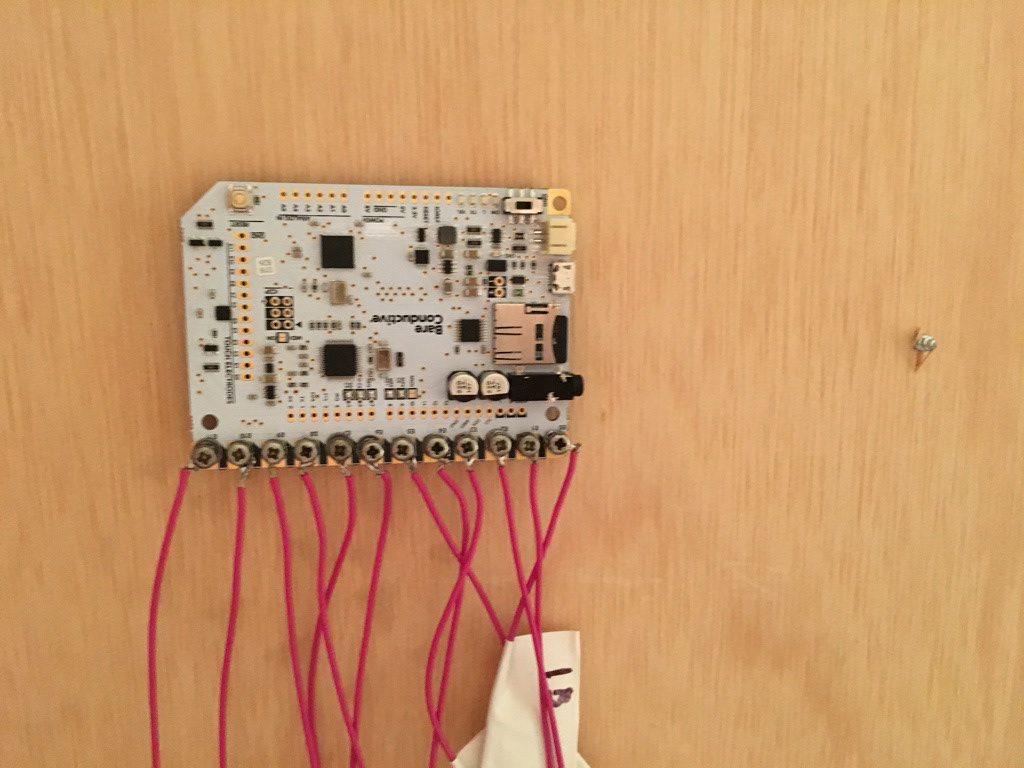
Touch board controlling forest sounds

Color changing leaf

Arduino controlling night sky

PIR sensor embedded in mural
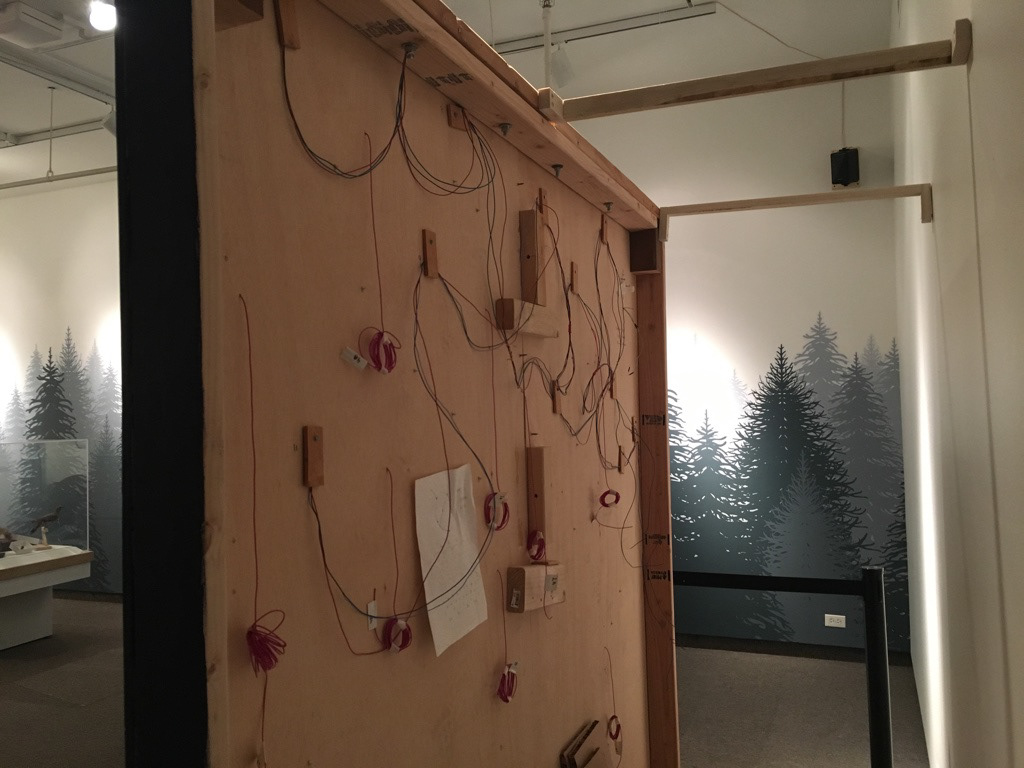
Circuitry
Fabrication
I started with a scale sketch of the scene I wanted to fabricate. Then, I began to build. The mural is made out of two sheets of 3.5' by 7' plywood. The second tree from the left and the forest floor are intentionally placed to hide the gaps between the two boards. The aspen trees and the ground are fabricated from half-inch corrugated cardboard, paper mache, plaster, and paint. The leaves and branches are laser cut from birchwood. Like the tree trunks, the branches were paper mached and plastered to achieve the desired effect. The leaves are painted with a base of white latex paint and colored with solar Color Dust (a color changing pigment) mixed with a gel medium. The moon is made from a moldable plastic material called Instamorph.

Adobe Sketch
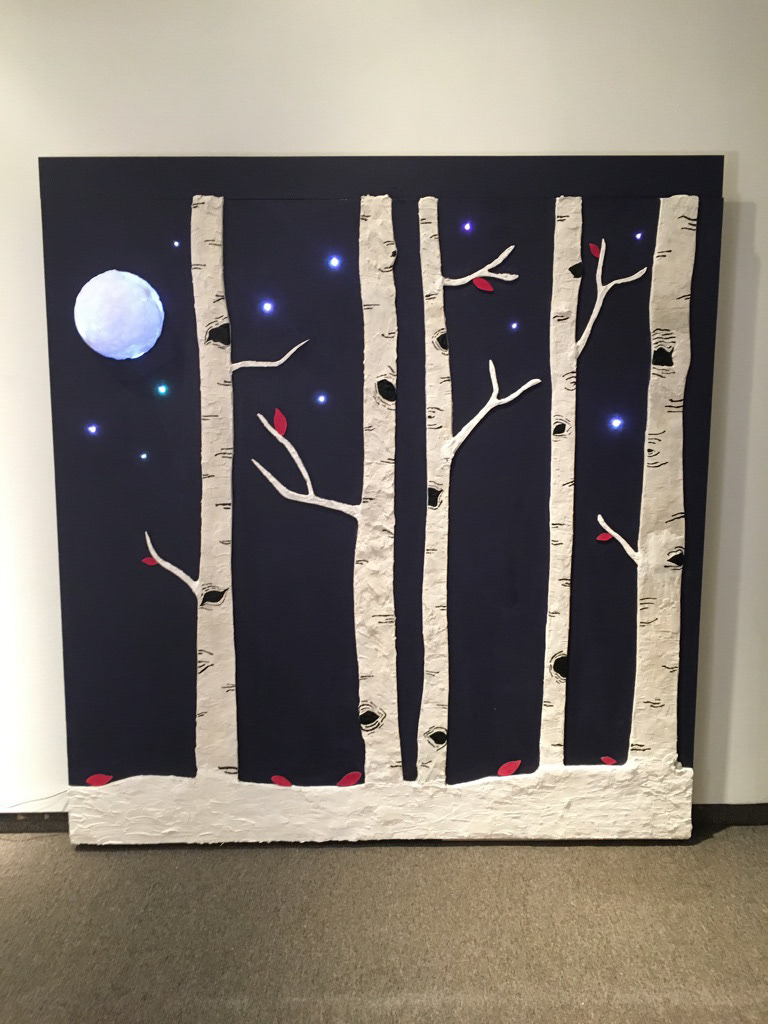
Final Implementation

Blank mural
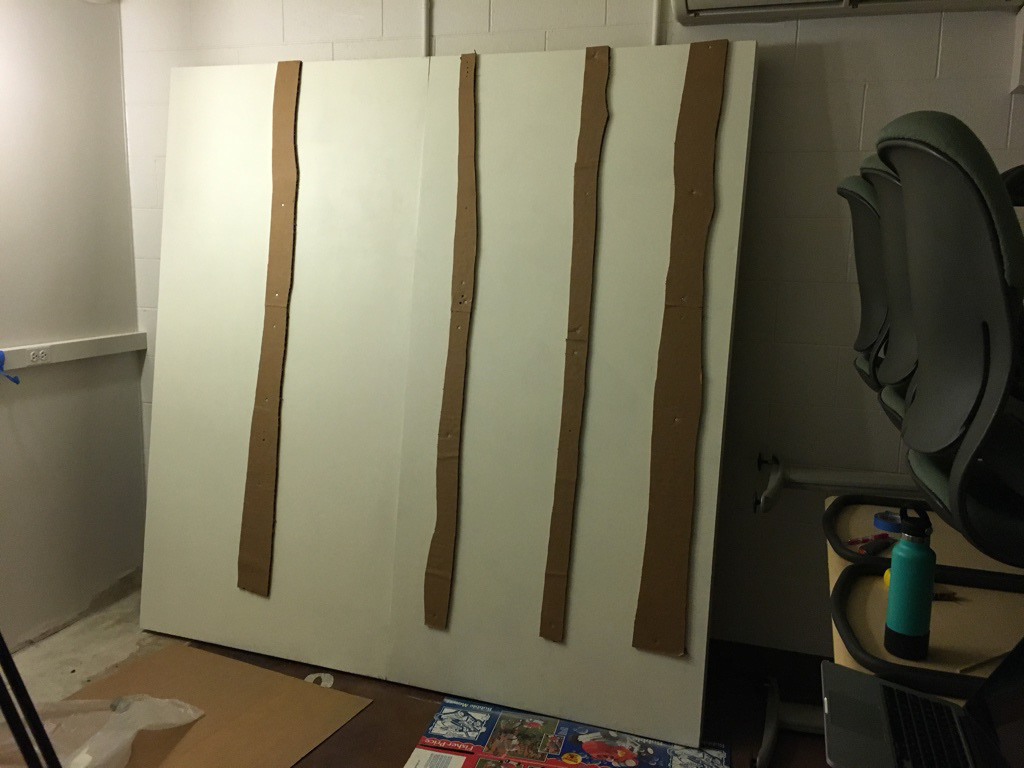
Cardboard trees

Paper mached cardboard trees

Plastered cardboard trees

Ground and final tree over gap

Tree detail and moon

Designing the leaves

Paper maching the branches

Building the moon
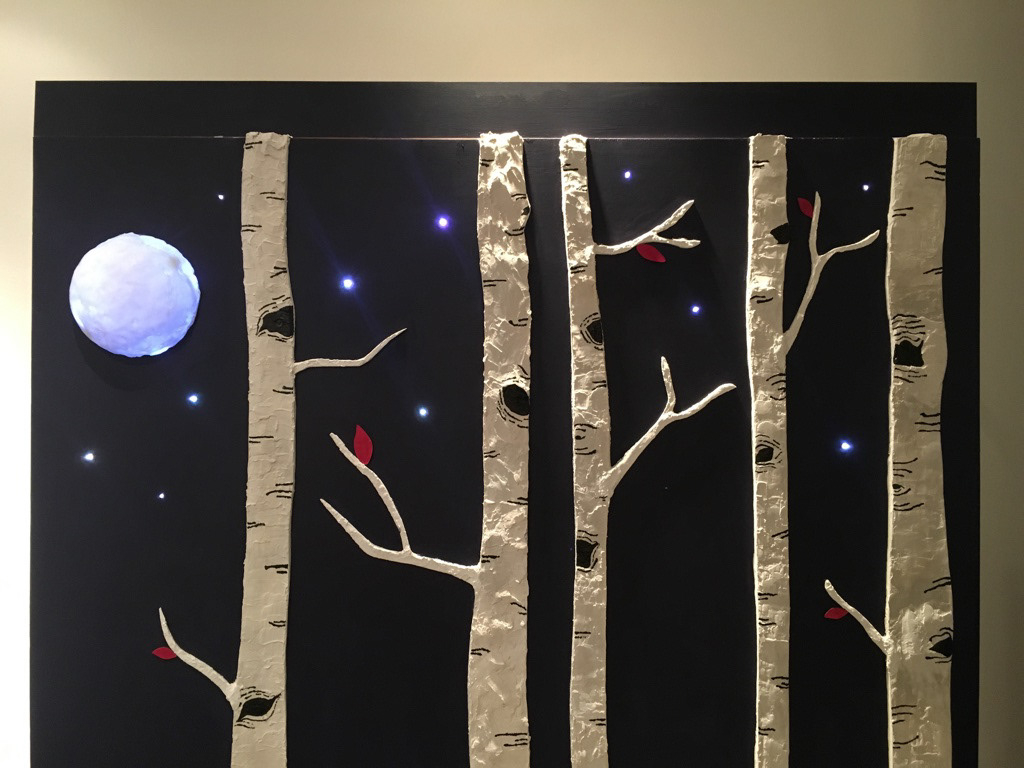
Close-up of final mural
Other Media
While installing this mural for Tree Space, two different videographers reached out to make videos about my installation.